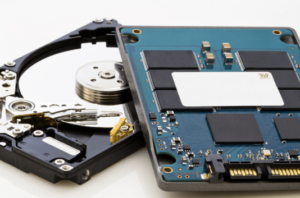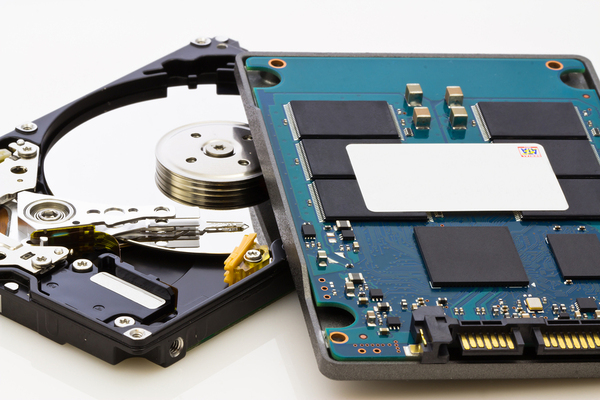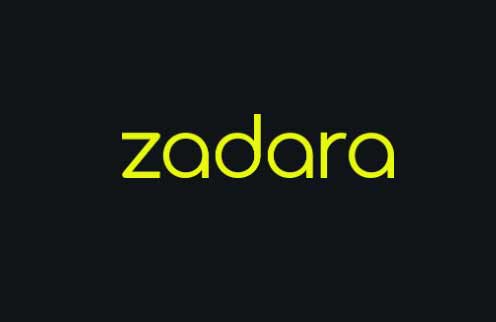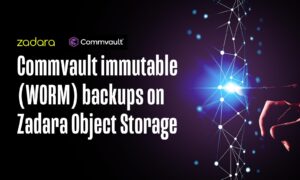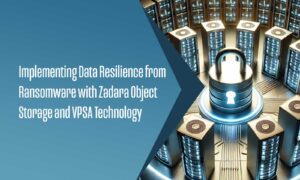All flash vs hybrid: To flash or not to flash is no longer the question. According to 451 Research, about 90 percent of all enterprises are already using some form of flash data storage in their data centers. And it’s All Flash Arrays (AFAs) that form the fastest growing segment of that market. As flash memory prices continue their steep descent, more and more storage administrators are finding that flash-based solid state drives (SSDs) are becoming an affordable alternative to traditional hard disk drives (HDDs) for a wide range of storage applications.
But all-flash may not be the best option in every case. In fact, for many workloads, a SSD/HDD hybrid solution may be more cost effective.
The big advantage of SSDs is their blazing speed. In fact, modern SSDs have proven themselves superior to HDDs not only in terms of raw performance, but also in other areas such as storage capacity, reliability, and power consumption. But the one area in which flash-based storage has yet to surpass spinning disks, and probably won’t for some years to come, is in cost per GB.
Hybrid Arrays: Faster Than HDDs, Less Expensive Than AFAs
In a SSD/HDD hybrid device, a small amount of flash media (usually between two and ten percent of total capacity) is paired with hard disks that are used for bulk storage. The flash portion of the array is employed as a cache in which frequently used data is housed. Information that the using application calls for less frequently, which is usually by far the bulk of the data, resides on the HDDs. The storage controller monitors which data is being called for most often, and moves blocks in and out of the SSD cache as required.
This strategy allows “hot” data, information the using application needs frequently, to be read and written from the cache at near SSD speeds. Colder, less used data is still housed on the slower HDDs. The result is that for appropriate workloads, SSD/HDD hybrid devices can often provide SSD-like performance at a much lower price point.
The one area in which a hybrid device provides little advantage is with new data. In order to know which blocks should be kept in the SSD cache, the storage controller must train itself over time. So these drives have what might be called a “break-in” period as the controller figures out which portions of the data should be cached. During that time, the device performs more like a HDD array than an AFA.
The great advantage of this hybrid arrangement is that the largest portion of the storage array is made up of relatively inexpensive HDDs. The small amount of more expensive SSD cache increases the cost of the device only by 10 to 20 percent, while often providing a performance gain of 100 percent or more.
How To Decide Whether An AFA or Hybrid Solution Is Best For You
The place to start in deciding whether an AFA or hybrid solution will work best in your data center is to evaluate your workloads.
Where the performance advantages of SSDs show themselves most significantly is with those workloads, such as large databases and OLTP systems, that require very low latencies and high input/output (IOPS) rates. Such applications, particularly when they are more dependent on random access performance than on high throughput rates, are likely to be especially well served by AFA storage. On the other hand, workloads that transfer data in a more linear fashion may be better suited to a hybrid solution.
One issue with hybrid arrays is that they can’t always be counted on to deliver predictable performance, especially as regards latency. Because the I/O responsiveness of the array is dependent on whether the data is housed in the SSD cache or on slower hard drives, applications that require consistently low latencies may not be a good match for a hybrid solution.
One key is to focus more on cost per IOPS than on cost per GB. HDDs can still boast a lower cost per GB, while SSDs have a clear advantage in cost per IOPS. As Jim Handy, an analyst at Objective Analysis, puts it, “Focus on what would be the lowest overall system cost to get the throughput that you require.”
You should also consider total cost of ownership. Because SSDs are beginning to surpass HDDs in storage density (the amount of storage that can be packed into a single device), fewer of them are needed for a given amount of storage. That can reduce data center space requirements. And because SSDs consume less power and emit less heat, both electricity and cooling costs can be lower when AFAs are used in place of HDDs and hybrids. When TCO is taken into account, an AFA solution to your storage needs may be more affordable than it at first appears.
Both All-Flash and Hard Disk Arrays Remain Viable Options
AFA storage is clearly the wave of the future. But hybrid storage can still be a very cost effective option for workloads that don’t require the highest levels of IOPS and latency performance. If you are considering how best to take advantage of the performance benefits SSDs can provide in your data center, we can help. Please request a customized TCO analysis.

